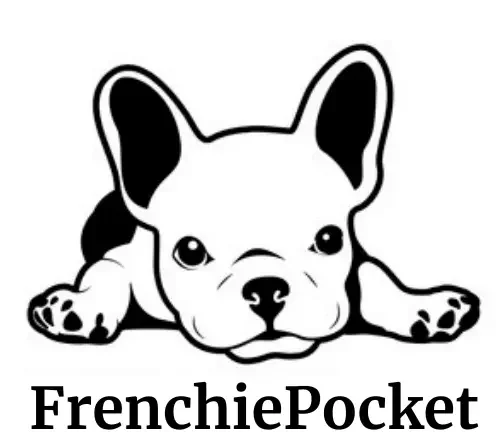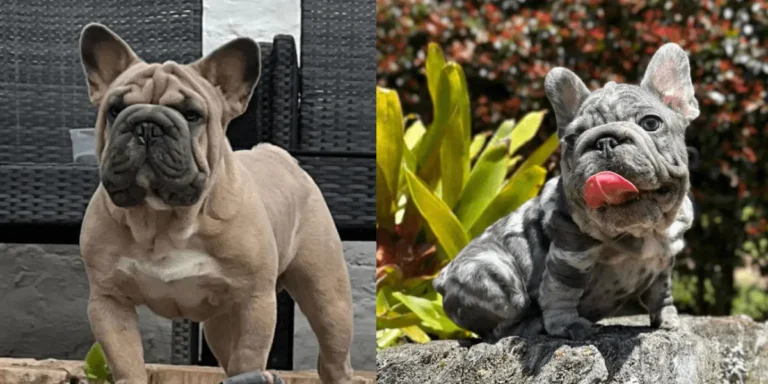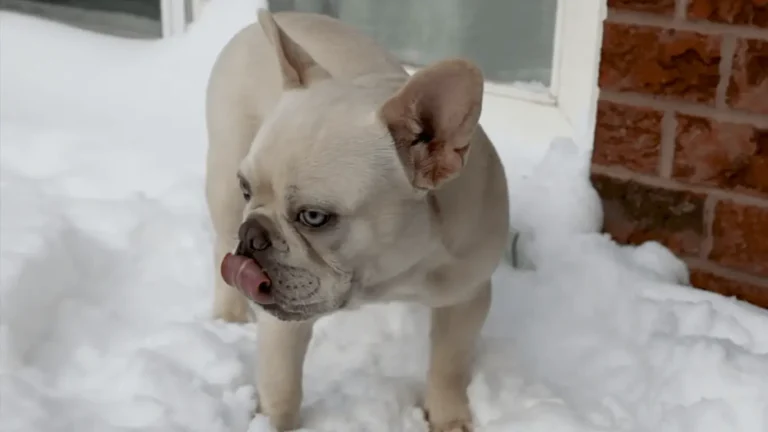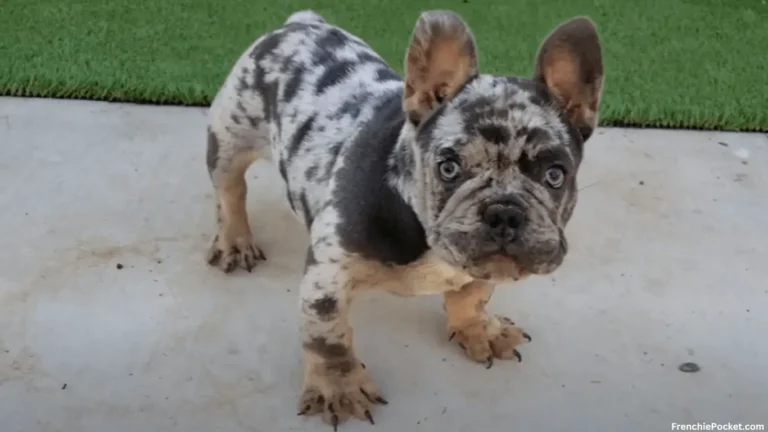Blue Fawn French Bulldog
The Blue Fawn French Bulldog is instantly recognizable thanks to its striking blue-gray coat and adorable wrinkled face.

Dog owners worldwide have fallen in love with this endearing breed because of its unique appearance, friendly demeanor, and evident loyalty. Whether walking in the park or relaxing on the couch, the Blue Fawn Frenchie will steal the show. Therefore, the Blue Fawn Frenchie is an excellent option for a distinct and endearing dog.
What is a Blue Fawn French Bulldog?
A French Bulldog with an unusual and beautiful blue fawn coat is hard to find. As the name suggests, a blue-gray coat with a fawn undertone gives this breed its unusual and eye-catching appearance. A recessive “ay” gene is responsible for the fawn coloring, whereas a diluted form of the black coat color gene is responsible for the blue. These dogs look amazing, and their kind and devoted attitudes help them win over the hearts of families and dog lovers.
| Name | Blue Fawn French Bulldog |
|---|---|
| Appearance | Short and compact with a blue coat and fawn-colored markings |
| Weight | 16-28 pounds |
| Height | 11-12 inches at the shoulder |
| Life Expectancy | 10-12 years |
| Temperament | Playful, affectionate, and loyal |
| Health Concerns | Brachycephalic Syndrome, Hip Dysplasia, Allergies, Ear Infections, and Spinal Issues |
| AKC Recognition | Not recognized |
| Price Range | $4,000-$10,000+ |
Aside from the standard brindle and fawn, French Bulldogs can also be found in various colors, including blue, chocolate, and merle. The American Kennel Club (AKC) is the authority on canine breed standards, although only some of these colors meet AKC requirements.
The American Kennel Club (AKC) only recognizes a small number of colors for the French Bulldog breed, including brindle, fawn, and white. Generally, these “official” colors best represent the temperament and beauty of the breed.
However, the AKC does not recognize Blue Fawn Frenchies as a legitimate color for the breed. Unfortunately, this disqualifies them from entering AKC conformation shows or being recognized as a purebred French Bulldog with the organization, even though they are lovely and unique. However, this does not lessen their worth as cherished pets and devoted companions.
Blue Fawn Frenchies look like
The unusual and attractive coat color of a Blue Fawn Frenchies sets it apart as a distinct subtype of the breed. A blue-grey base with a fawn undertone characterizes this color, which gets its name from the two dominant tones in the name. The fawn coloring appears on the dog’s face, ears, and sometimes the rest of its body, while the coat can be anywhere from a light silver-blue to a heavier, steel-blue tint.
The diluted black coat color gene is responsible for the blue in a Blue Fawn Frenchies, while the recessive “ay” gene is to thank for the fawn coloring. The result is a visually attractive and distinctive dog with a plush, velvety coat.

Blue Fawn Frenchies, in addition to their unique coat, exhibit all the classic features of the French Bulldog breed. They are stocky and muscular, with a giant skull, a stubby snout, and a wrinkly, expressive face. Their eyes are vivid and alert, and their ears are often big and bat-like.
Because of their friendly and outgoing nature, Blue Fawn Frenchies are a top pick for families and dog enthusiasts alike. Even though the AKC does not recognize their coat color as a breed standard, these dogs are widely sought after because of their appearance and endearing personalities.
What gives Blue Fawn Frenchies their appearance?
The unique coat color of Blue Fawn Frenchies is the consequence of a combination of genes. A diluted form of the black coat color gene gives Blue Fawn Frenchies their distinctive blue coloring. It’s also called the dilution gene. The presence of the recessive “ay” gene causes the normally black hairs to appear tan or fawn because it dilutes the pigment.
The French Bulldog with these two genes has a fawn undertone to its blue-grey coat. Other genes may impact the depth of the blue and fawn colors, which can vary from dog to dog.
Blue-Fawn Frenchies, like all French Bulldogs, have a compact and muscular body, a large head, a short nose, and a wrinkled face; the only difference is the color of their coat. Their friendly nature and boundless love for their human companions also contribute to their widespread appeal.

Other types of Blue Frenchies
French Bulldogs are well-liked due to their distinct appearance, pleasant demeanor, and loving temperament. While conventional Frenchies may be found in any number of colors—from black to white and everywhere in between—variations in the blue family tend to be the most popular and sought-after.
- As the name suggests, a Blue Frenchie has a uniformly blue coat, the tint of which can vary from a smoky gray to a deep blue that approaches navy. The black coat color gene is diluted to produce this variant.
- In contrast, a Frenchie with the Blue Fawn coat pattern is all blue. Usually found on the face, legs, and body, these marks are pale tan. This variant results from a recessive fawn gene mixed with the blue coat color.
- A French bulldog with the Blue Merle coat pattern combines blue and gray with black markings. This coat pattern, caused by the Merle gene, manifests as a mottled or wavy appearance. Blue Merle Frenchies can have anywhere from a few tiny white patches to a predominantly blue coat with big swathes of gray, depending on the individual dog.
- A Blue Pied Frenchie, also called a Piebald, has a blue body with white spots on the chest, face, and legs. Pied patterns range from tiny spots to bigger patches of white and are frequently equated to the “cow pattern” of certain breeds.
- Blue with sable markings—that’s the coat of a Blue Sable Frenchie. The hair in a sable coat has a darkened tip and a lighter base. The coat of a Blue Sable Frenchie is predominantly blue, with sable markings appearing as contrasting black stripes or patches.
- A blue and tan Frenchie is easily recognizable by its blue coat and tan face, legs, and chest markings. The tan and blue coats come in shades, from light cream to dark chocolate brown and powder blue to steel blue.
Due to their unique beauty and sweet personalities, pet owners are still very interested in blue Fawn Frenchies that deviate from the AKC’s color standards.
How much is Blue Fawn French Bulldogs?
Several factors can affect how much a Blue Fawn French Bulldog puppy costs, including the breeder’s reputation, the breeding facility’s location, and the individual puppy’s quality and lineage. Blue-fawn Frenchies might cost more than the average dog because of their scarcity and demand. A Blue-Fawn French Bulldog can cost anything from $4,000 to $10,000.

However, it is essential to do your homework and select a reputable breeder who places a premium on the health and well-being of their dogs, as acquiring a puppy merely based on its appearance can lead to supporting unethical breeding practices. Remember the substantial recurring expenses, such as veterinary care, food, and supplies, that come with having a French Bulldog?
Blue Fawn Frenchies are rare!
Blue Fawn French Bulldogs are one of this breed’s most sought-after and rarest colors. Their high value directly results from their scarcity; it is not unusual for breeders to ask for a premium when selling such animals. However, one must remember that higher prices only sometimes indicate superior quality. Finding a reliable breeder who puts the happiness and well-being of their dogs before profits is crucial.
Due to their rare breeding criteria, French Bulldogs can be rather expensive. Due to their small stature and unusual reproductive structure, many Frenchies need artificial insemination. In addition, a cesarean section is frequently necessary for French bulldog mothers to safely birth their puppies due to the size of their heads and shoulders. The expense of breeding and caring for Frenchies can increase due to these considerations.
Blue Fawn French Bulldog Health Problems
Common health problems in French Bulldogs, including Blue Fawns, include the following:
- French Bulldogs are prone to respiratory problems due to a condition known as brachycephalic syndrome, which is characterized by the dog’s flat face and small snout.
- Discomfort and limited mobility arise from hip dysplasia, which occurs when the ball and socket of the hip joint are misaligned.
- Frenchies may have itching, rashes, and other skin issues due to their susceptibility to allergies and food allergies.
- Infections of the Ear Because of their floppy ears, French Bulldogs are prone to ear infections.
- Spinal abnormalities: Frenchies may experience discomfort, weakness, and movement challenges due to spinal abnormalities such as intervertebral disc disease.

Frequently Asked Questions
What is the definition of a Blue Fawn French Bulldog?
The Blue Fawn The French Bulldog color variant is a rare breed variation. They are blue with fawn patterns on their coats.
What is the price of Blue Fawn French bulldogs?
Blue Fawn Frenchie’s can be fairly pricey, ranging from $4,000 to $10,000 or more. Prices might vary depending on the breeder’s reputation, region, and demand.
What health issues do Blue Fawn French Bulldogs have?
Blue Fawn Frenchies, like all Frenchies, are susceptible to health problems, including Brachycephalic Syndrome, Hip Dysplasia, Allergies, Ear Infections, and Spinal Issues.
What kind of disposition do Blue Fawn Frenchies have?
The color blue fawn The personalities of French Bulldogs are noted for being playful, affectionate, and loyal. They are gregarious canines who enjoy being around humans and other animals.
Are Blue Fawn Frenchies suitable as family pets?
Yes, Blue Fawn Frenchy make wonderful family pets. However, as with all dogs, they should be supervised around young children to avoid accidents.
How much do Blue Fawn French Bulldogs shed?
French Bulldogs, including Blue Fawns, shed infrequently. They have a short, glossy coat that requires little maintenance, although they shed frequently all year.
Conclusion
Blue Fawn French Bulldogs are recognized for their playful and friendly attitudes, owing to their beautiful blue coat and fawn-colored markings. However, as with all Frenchies, they are prone to particular health issues and require their owners’ proper attention and care. While more expensive, locating a good breeder and addressing their health needs can result in many years of love and friendship with this unique and lovely breed.







